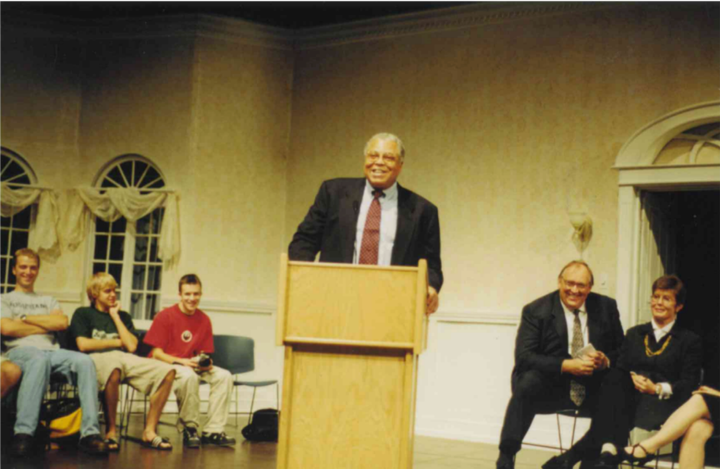First African studies course planned for January term
BEAU BORDEWYK
bjbordewyk16@ole.augie.edu
According to the most recent estimates, more than 1.2 billion people live on the continent of Africa, and yet Augustana and many other liberal arts colleges lack African studies courses.
But not for long.
Augustana students will have the opportunity to take the university’s first African studies course during the upcoming J-Term.
The course, taught by professor Robert Wright, will cover African culture, history and politics.
Senior Abel Negash, an international student from Ethiopia, helped Wright organize the class. Both Negash and Wright thought the class was an important opportunity to acknowledge the growing number of international students from Ethiopia and other African nations attending the university.
“You look at the African immigrant population in Sioux Falls and the number of international students from Africa attending Augustana and you wonder: ‘Why doesn’t Augustana have an African studies course?’” Wright said.
Negash said the class is an opportunity for students to learn about a continent not normally studied in high school or college.
“The class is a way for students to learn about a part of the world that affects Sioux Falls and Augustana significantly but is for the most part unknown,” Negash said.
The 2013 American Community Survey reported that Ethiopians surpassed Mexicans as South Dakota’s largest immigrant population. South Dakota is the only state in the country which Ethiopians are the largest population of immigrants.
The 2015 United States Census indicated that 18.7 percent of South Dakota’s foreign-born population hail from Africa, and that 11.4 percent of the foreign-born population emigrated from Eastern Africa.
A 2017 Pew Research Center study conducted by Monica Anderson revealed that the African immigrant population has been “roughly doubling every decade since 1970.” According to the study, in 2000, the U.S. was home to 881,000 African born immigrants. In 2015, that number increased to more than 2.1 million.
2010 U.S. Census data also showed that black residents living in South Dakota more than doubled from 4,685 in 2000, to 10,207 in 2010.
Negash says that African culture’s strong presence at Augustana makes the university an ideal place for teaching African studies.

“Going to Augustana and being in Sioux Falls, there are a lot of Ethiopian students you can connect with,” Negash said. “As an Ethiopian, you still feel like you maintain that cultural connection, so African studies courses would really do well here with the amount of input and care that a lot of students have for the topic.”
Sophomore Sara Telahun Birhe, who immigrated to the United States from Ethiopia in 2001, says that growing up in Sioux Falls helped her stay connected with her Ethiopian roots.
“A lot of the experiences I had as a kid growing up in South Dakota are almost identical to those of international Ethiopian students because I was raised in an Ethiopian community,” Telahun Birhe said. “I went to Ethiopian church. I hung out with Ethiopian kids after school. I ate Ethiopian food. I would ask myself, ‘Am I Ethiopian more than I am American, or Am I American-Ethiopian?’”
Telahun Birhe says she ultimately hopes that the class can help eliminate harmful stereotypes about Africa perceived by many Americans.
“The popular image of Africa is a tribal, primitive place, but it is a lot more modern than people think,” Telahun Birhe said. “I think in general there is a stigma against immigrants right now, and it isn’t that people are intolerant, it’s that people are uneducated to the truth. If this class could teach students of the culture and history of immigrants that are in South Dakota, I think it really humanize them as something more than immigrants.”



